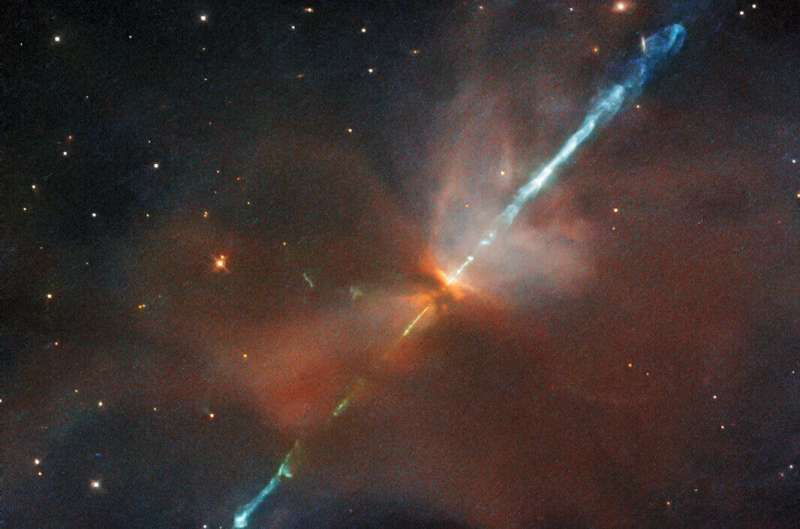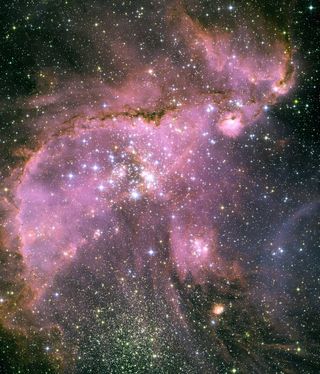Image: Hubble snaps speedy star jets

This striking image features a relatively rare celestial phenomenon known as a Herbig-Haro object. This particular object, named HH111, was imaged by the NASA/ESA Hubble Space Telescope's Wide Field Camera 3 (WFC3).
These spectacular objects develop under very specific circumstances. Newly formed stars are often very active, and in some cases they expel very narrow jets of rapidly moving ionized gas – gas that is so hot that its molecules and atoms have lost their electrons, making the gas highly charged. The streams of ionized gas then collide with the clouds of gas and dust surrounding newly formed stars at speeds of hundreds of miles per second. It is these energetic collisions that create Herbig-Haro objects such as HH111.
WFC3 takes images at optical, ultraviolet, and infrared wavelengths, which means that it observes objects at a wavelength range similar to the range that human eyes are sensitive to (optical, or visible) and a range of wavelengths that are slightly too short (ultraviolet) or too long (infrared) to be detected by human eyes. Herbig-Haro objects actually release a lot of light at optical wavelengths, but they are difficult to observe because their surrounding dust and gas absorb much of the visible light. Therefore, the WFC3's ability to observe at infrared wavelengths – where observations are not as affected by gas and dust – is crucial to observing Herbo-Haro objects successfully.
Image: Hubble views a baby star's tantrums
Provided by NASA's Goddard Space Flight Center
Hubble telescope spies brilliant star cluster in Milky Way's neighbor galaxy

Just outside the Milky Way, about 210,000 light-years from the Earth, lies the Small Magellanic Cloud. While it may seem a humble shadow of the Milky Way, it’s a galaxy in its own right andfascinates astronomers since it's a hotbed of star formation.
Now, the Hubble Space Telescope has peered deep into the heart of the SmallMagellanic Cloud to reveal the bright star cluster NGC 346 at its core. NGC 346 isa dynamic place where hot new stars push and pull at the gas and dust that surround them, so it's filled with clumps of young blue stars, dominating Hubble's view in the new image, which NASA released Monday (Aug. 30)
"A torrent of radiation from the cluster's hot stars eats into denser areas creating a fantasy sculpture of dust and gas," NASA officials wrote in an image description. "The dark, intricately beaded edge of the ridge, seen in silhouette by Hubble, is particularly dramatic. It contains several small dust globules that point back towards the central cluster, like windsocks caught in a gale."
No comments:
Post a Comment